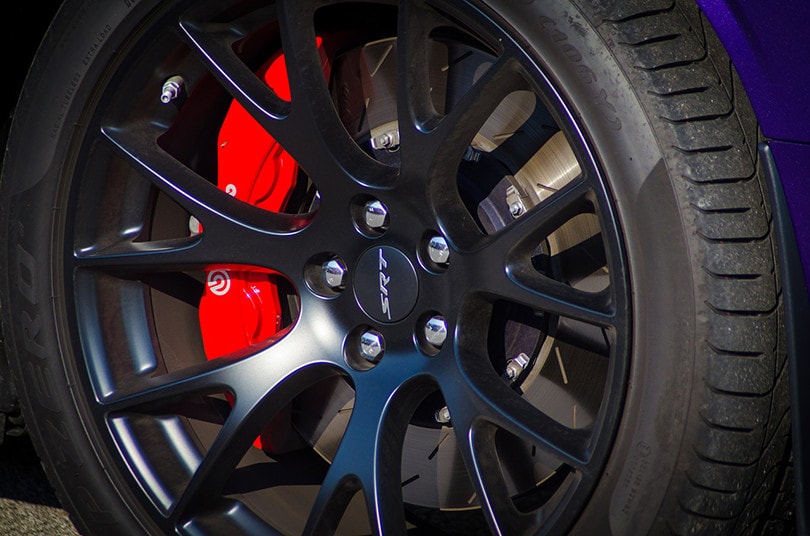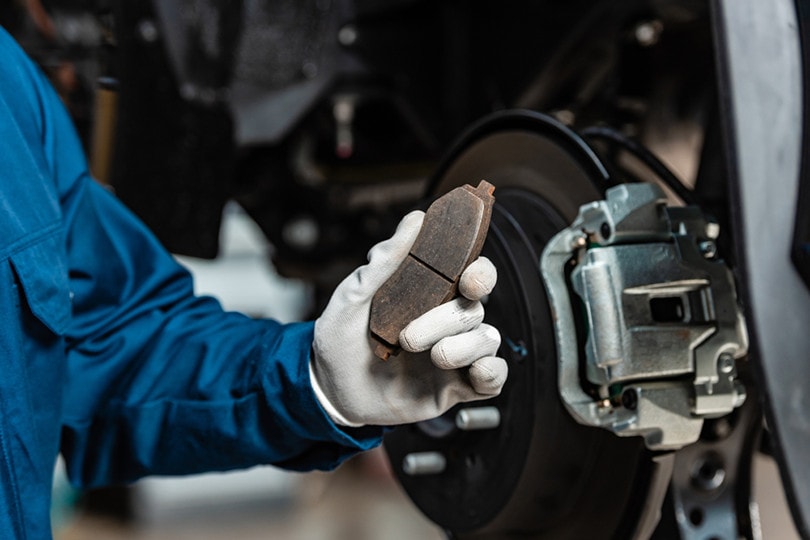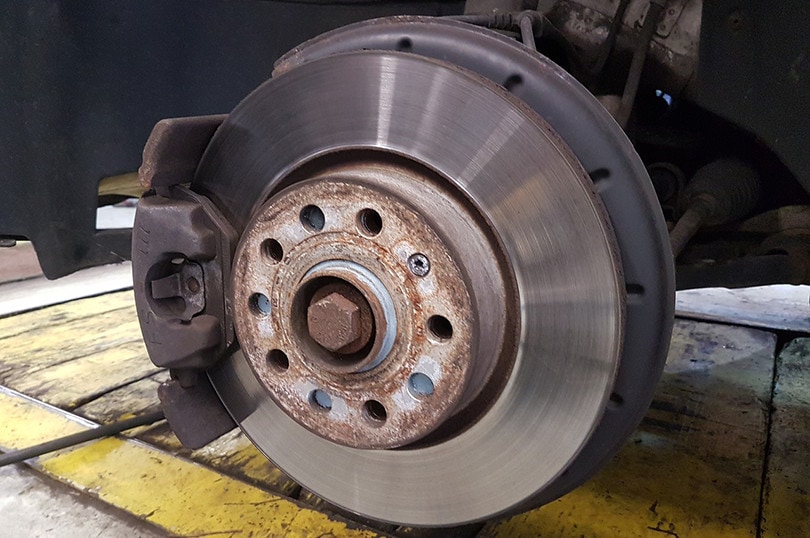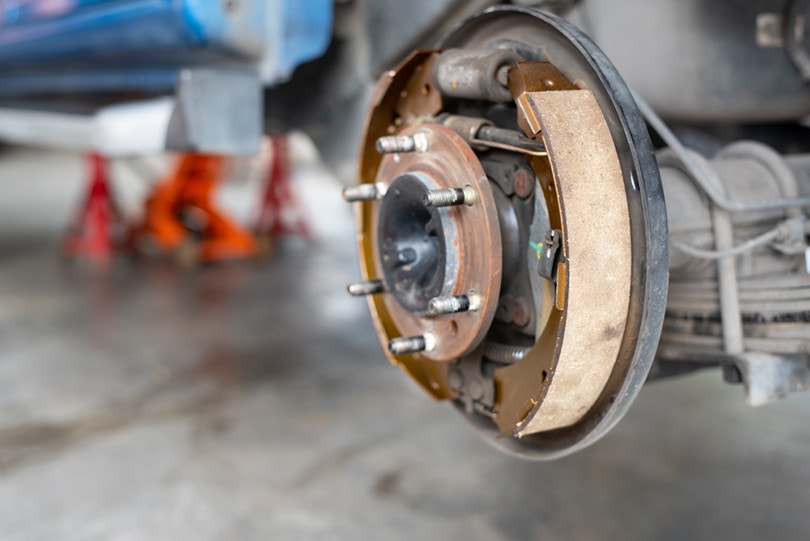What Is The Cost To Replace Brake Pads and Rotors In 2025? What You Need To Know!
-
Pete Ortiz
- Last updated:

The brake pads and rotor are two of the most important components in any vehicle’s system, as they are responsible for decelerating and stopping an automobile in motion—even if it weighs thousands of pounds.
For them to be effective, they have to work as a unit. That’s why when you hear a mechanic talk about replacing a brake pad, they are also checking the rotor. Speaking of, it’s not unusual for the pads to wear out faster than the rotors. They do take on a lot, in addition to the heat and friction.
Before estimating the costs of replacement, let’s look at how the brake pads and rotors harmoniously function.
Brake Pads
We all know what a brake pedal is, but what you might not know is, when you press down that pedal, you’ll be activating a cylinder that’s been designed to release brake fluid into hoses. That fluid will then move all the way down to the calipers, which will in turn engage the brake pads.
Pressure will then be applied to the rotor, and the impact felt on the wheels. What makes the vehicle decelerate or come to a stop is the friction created once that pressure is exerted. The minute you take your foot off the pedal, that whole process gets reversed. The pads are set free, the fluid is forced back up, and the wheels get the freedom to move again.

Types of Brake Pads
It’s important to note that there are different types of brake pads—semi-metallic, ceramic, and non-asbestos organic. The semi-metallic pads constitute 30%–65% metal, never go hard on the rotors, and are relatively cheap. Drivers who prefer them are those who drive high-performance automobiles.
Ceramic pads are without a doubt the most expensive pads in the market. The good news is they are durable, cleaner, and hardly produce any noise while in operation. They outperform non-asbestos organic pads, which wear out fast and never fail to produce lots of brake dust.
Rotors
If you remove your wheel, you’ll be able to spot a circular disc connected to each one of them. These components have been designed to transform the kinetic energy generated while the wheels are in motion, into thermal energy. So like we’ve said, when you press down the pedal, friction is created, the rotors resist the spin, slow down the rotation, and ultimately stop the car.
- See Also: 4 Different Types of Car Brakes
Types of Rotors

Before replacing your rotors, you have to confirm what type of rotor was designed for your car. You cannot just go with the first one you see, because you could mess up the entire system. In total, there are four different types of rotors. There’s blank & smooth, slotted, drilled, and drilled & slotted.
Differentiating them is not that difficult. The blank & smooth rotors are very common, as they are found in nearly every passenger car. In addition, depending on which ones you end up buying, they could either be basic or premium. If you’re working with a premium brake pad, don’t settle for the basic option. It will only reduce the life of the pad and cost you more money.
Drilled rotors are exactly what they sound like—rotors that have been drilled. They have holes all over their surface to allow heat to dissipate off them. People who love driving SUVs and heavy-duty trucks usually go for slotted rotors. These are rotors that have slots around their exteriors, meant to enhance the vehicle’s stopping power.
Finally, we have drilled & slotted. Rotors are specifically designed for cars that require improved braking at ridiculously high speeds, such as sports cars.
Cost of Replacing Brake Pads
Unfortunately we’ll have to give you guys a ballpark figure since these things depend on quite a number of factors. For example, the costs involved in replacing the pads of a sports car cannot be remotely close to those involved in replacing the ones found in a passenger car.
Let’s assume that you’re trying to replace the pads of an ordinary compact car. The type of vehicle that usually comes with a simple front single-piston braking setup. You should budget with $200, labor inclusive. The cost of the pads will range from $50 to $100, while labor falls in the $70 to $100 range.
This, by the way, is the cost per axle. You’re always encouraged to replace things like brake pads and rotors in pairs. Don’t change the left pad and leave the right one for next time. That would affect the braking force, as it won’t be even.
Because the rear pads tend to be smaller than the ones used at the front, they are normally cheaper. But you’ll still spend more money if your car is the type of vehicle designed with the rear drum brake setup—a setup that always demands more from the mechanic trying to replace the brake shoes.
Rear drum brake setups are synonymous with SUVs and sports cars. If we had to estimate the costs involved, we would say anything from $400 to $700 per axle (labor included).

Costs of Replacing Brake Rotors
The cost of replacing the rotors will again vary depending on the type of vehicle. If we include labor, the total costs will range from $300 to $450. The rear rotors will usually be cheap due to two things—one, they cost less to manufacture, and two, they are typically smaller.
However, if you’re driving a luxury vehicle, these costs will exponentially rise. You could be looking at costs as high as $900 to $1,000 per axle, including labor.
Additional Costs
It’s wise to budget for the cost of the brake fluid as well. We don’t know why a lot of people overlook this part, seeing as it plays a crucial role in the braking system. Unfortunately, replacing the brake fluid is not a simple process. You first need to conduct a thorough fluid flush and then replace the brake fluid. This will cost you $70 to $130, depending on the quantity required and the type of fluid you use.
How Often Should One Replace The Brake Pads and Rotor?
According to manufacturers, we’re supposed to change our pads after covering 40,000 to 50, 000 miles. And once you clock 70,000 miles, you have to change your rotors. Needless to say, the frequency at which one replaces these components will hinge on a couple of factors, including the driving conditions and patterns.
It would be irresponsible for anyone waiting to change these parts once they start seeing the symptoms. You’ll not only be putting your life at risk but those of other motorists as well. A squealing sound will be a sign that your pads are already worn out. And if you feel the rotors sort of vibrating through your accelerator, their replacement is due.
Conclusion
If you’re looking to save on costs, you should make it a DIY project. Replacing these parts is not that difficult, assuming the car you own is an ordinary passenger vehicle. Some of the tools you’ll need include a floor jack, screwdriver, and standard wrench. That being said, even when using a mechanic replacing rotors and brake is not overly expensive.
Featured Image Credit: coltsfan, Pixabay
Contents


